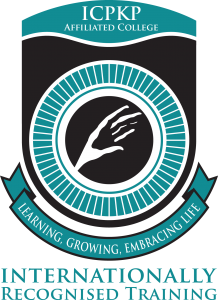
International Certificate in Professional Kinesiology Practice
The modules you see below are the Course outline for the Certificate in Kinesiology. The certificate is the first year of a potential 5 years in the ICPKP programme.
International Certificate in Self Care – ICPKP (Short Course)
BKP 101: Basic Self-care Kinesiology skills
Introduction to three different kinds of easy to learn self-energiser trigger points and the powerful meridian energiser trace. As well, you will use walking gait reflexes, cross-crawl self integration, vision and hearing energy techniques. Students will learn a simple emotional stress release technique and emotional trigger words as well as enjoy the energising power of a specific goal, and be able to perform a ’time of day’ kinesiology energy balance for self care using whole body testing.
International Certificate in High Level Wellness and Vitality – ICPKP (4 Months further training)
BKP 102: Proficient manual muscle testing
Students completing this unit will be able to use muscle testing accurately. They will also learn to perform a Kinesiology energy balance on others. They will be able to identify dehydration, ionisation, neurological dis-organisation (switching), central vessel integrity and thymus energy imbalance.
BKP 103: Introduction to the Law of 5-Elements
This unit develops an elementary understanding of and skill in using basic 5-Element principles for energy balancing. Students completing this unit will be able to demonstrate skill; apply sound, colour, food, emotional and vertebral balancing techniques; utilise circuit locating and challenge; the 5-Element principle to perform an 8- muscle energy balance and select priority balancing procedure.
BKP 104: The body’s superficial energy connections
This unit introduces an understanding of the philosophy, principles and history of Kinesiology. This will extend the understanding of meridians and their related organ systems and to develop proficiency in a 14 muscle wheel energy balance. Students will be able to perform a 14 muscle goal balance and utilise the More and Priority modes.
BKP 105: The Law of 5-Elements in depth
This unit extends the understanding of, and skill in using, the 5-Element principles and emotions for energy balancing. It develops understanding and facility in using alarm points, Luo points and acupressure holding points. This will extend the range of meridian energy indicator muscle tests, demonstrate their surface anatomy and recognise the muscles action in sport and exercise.
International Certificate in Basic Kinesiology Principles – ICPKP (5 Months further training)
BKP 106: The PKP Database. The PKP finger mode protocol
Students who have completed this unit will be able to use effective listening skills to establish client rapport and understand their history. Students will be able to use finger modes, Professional Kinesiology Practitioners’ database concept, simplified PKP protocol, and age recession.
BKP 107: Using Kinesiology to reduce pain
Students completing this unit will be able to pre- and post-evaluate pain levels on a standard scale and use emotional and postural stress release, meridian flow adjustment, muscle energy techniques, cross crawl exercise, figure-8, marine spiral energy and supplements to reduce pain.
BKP 108: Food and body energy balancing
This unit develops an understanding of the chain of life, the six stages of nutrition, food combining; the concept of biogenic, biostatic, biocidic substances; students will be able to construct a diet using 5-Element, food family and food rotation principles and develop skill in using C1 and ear accupoint tests.
BKP 109: Advanced muscle techniques. Posture and muscle reactivity
This unit develops skill and understanding in correcting reactivity in muscles and meridians. In addition it focuses on developing skill in observing postural imbalance; to extend techniques in balancing energy in muscles using finger modes. Hidden muscle failure, Sustained muscle use and muscle Stretch response will also be covered.
BKP 110: Using client health records
The purpose of this unit is to establish, utilise and update a client health record; communicate in a professional manner and set clear boundaries in a kinesiology practice; establish personal ethical behaviour and respect client’s rights in a health care context.
International Certificate in Professional Kinesiology Practice – ICPKP (2 months further training)
RBT 201: Clinical Body Contact & Palpation
The purpose of this unit is to develop professionalism, skill and understanding in using Kinesiology techniques related to body contact. Those completing this unit standard are able to: prepare for and establish clinical body contact; maintain clinical body contact; and cease body contact in a kinesiology setting; describe and demonstrate palpatory sense; use palpation to assess the client muscle state; and integrate palpatory findings into the management of the client in a kinesiology clinical practice setting.
EMS 201: Mastery of Emotional Stress Release
The purpose of this unit is to develop skill and understanding in the use of the frontal/occipital stress release technique including the application of active listening and role play. Those who have completed this unit will be able to use basic frontal/occipital holding, assist the client: to find new resources, apply the video-rewrite method, brainstorm, make up new possibilities, use their senses and intuition, state what they are feeling, want and are willing to do to achieve this, with or without the use of imagery including but not limited to jewels, balloons, grounding rods, picture frames and symbolic encapsulation and the hypothesis of an older, wiser self, to enable the client to defuse stress related to but not limited to challenges to their authority and terminating a relationship within or without the context of active listening or role play.
Anatomy & Physiology 201
The purpose of this unit is to provide a simple, basic introduction to Anatomy and Physiology at a Cert. IV level in Australia. Those completing this unit will be able to describe in simple anatomical terms the respiratory, integumentary, urinary, cardiovascular, digestive, reproductive, and nervous systems with special reference to the brain and special senses; describe the human skeleton and types of joints, explain muscle structure, and describe the origin, insertion and action of major muscles of the body on a regional basis

